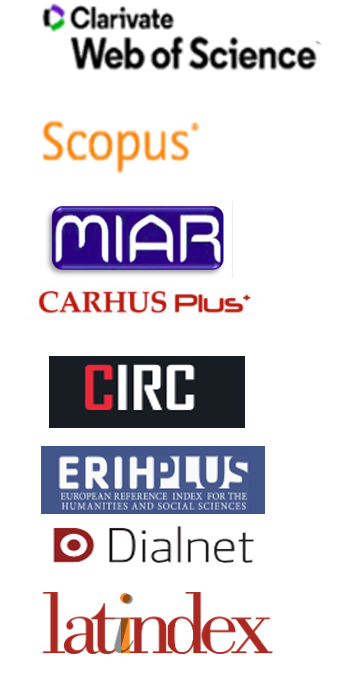Submissions
Submission Preparation Checklist
As part of the submission process, authors are required to check off their submission's compliance with all of the following items, and submissions may be returned to authors that do not adhere to these guidelines.-
The proposal has not been published elsewhere nor it has been presented to other journal (or, an explanation has been given to the editor, in Comments).
-
The file is in format Microsoft Office Word® (*.doc).
-
When possible, website addresses and DOI must be included in the references.
-
Font: Garamond; simple line spacing and justified; no indentation at the beginning of the paragraphs; 12 points line spacing between paragraphs; all pages must be numbered; all illustrations, photographs and tables must be inserted within text in their adequate location and not at the end of the document; it must be used italics and not underlined (with exception for URL addresses).
-
Text is in accordance with the bibliography and style guidelines on Guidelines for authors that can be found in About at Journal homepage.
-
If the document is sent to the peer review section, author should assure that it has been followed the instructions Assuring a blind review process.
- The submitted originals make appropriate use of inclusive language according to the Report of the Royal Spanish Academy on inclusive language: https://www.rae.es/sites/default/files/Informe_lenguaje_inclusivo.pdf.
- The submitted originals adequately report on whether the source data of the research takes gender into account, in order to allow the identification of possible differences according to the proposals of the European Commission in Gender: https://op.europa.eu/es/publication-detail/-/publication/c86c598f-8ae0-4aa1-bbcd-92134bbdfb0c
Copyright Notice
- Copyright and intellectual property belongs to author. Author guarantees editing and publishing rights to Ge-Conservación Journal, under a Creative Commons Attribution License. This license allows others to share the work with authorship and the original source of publication acknowledgement.
- Articles can be used for scientific and educational purposes but never for commercial use, being sanctioned by law.
- The whole content of the article is author’s responsibility.
- Ge-Conservación Journal and authors may establish additional agreements for non-exclusive distribution of the work version published at the Journal (for example, on institutional repositories or on a book) with acknowledgment of the original publication on this Journal.
- Author is allowed and encouraged to disseminate his works electronically (for example, on institutional repositories or on its own website) after being published on Ge-Conservación Journal. This will contribute for fruitful interchanges as also for wider and earlier citations of the author’s works.
- Author’s personal data will only be used for the Journal purposes and will not be given to others.
Privacy Statement
The names and email addresses entered in this journal will be used exclusively for the stated purposes and will not be available for any other purpose or other person.








